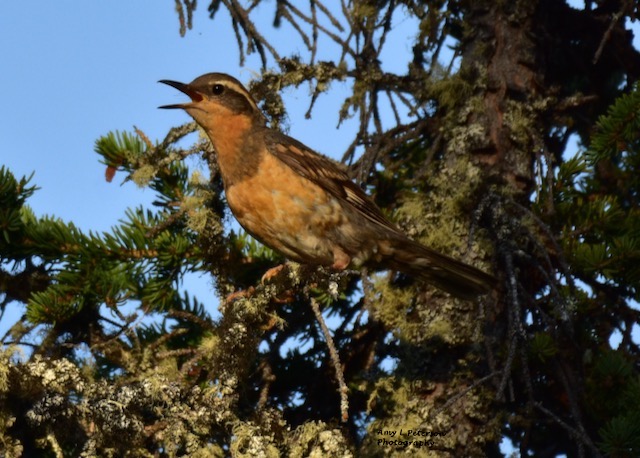Monday, July 15, 2024. Mark and I always take small live traps with us on our adventures, and I put one right outside the back door near our room, on the ground, with a peanut. In the morning, Mark came with me, opened the trap and this vole came out. We believe it’s a red-back vole based on the red on its head and gray sides.
Check out this video of the red-back vole.
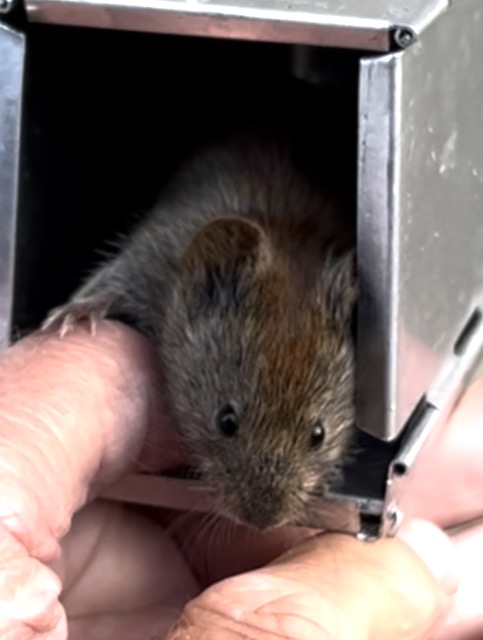

I also got a decent shot of a semi-palmated plover. These birds breed in open ground on beaches or flats in northern Canada and Alaska, nesting on the ground in an open area with little vegetation. On this beach, they shared the area with arctic terns.
Come fall, these birds will migrate to southern US, the Caribbean or South America.
Once again I got bombarded by arctic terns defending their fledglings. I didn’t stay long.
We headed out onto flat, calm water. It was a beautiful morning.

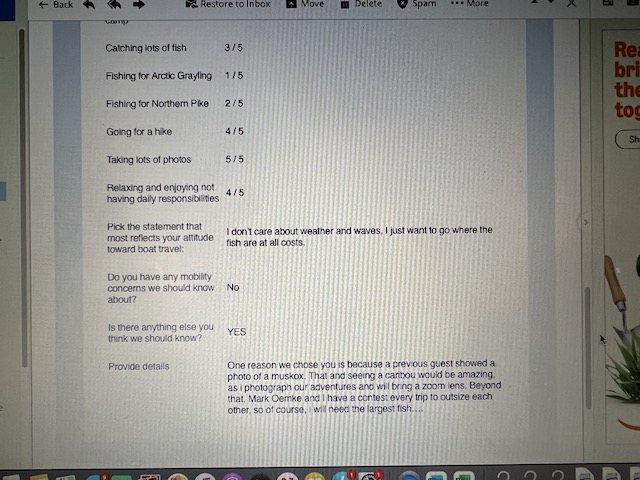
Manny finished by reading the last part of my responses, which said that Mark and I have an ongoing contest, and to keep my reputation, I would need to catch the larger fish. Manny found my response was rather amusing. I told him that in April of this year, at a staff meeting with about 75 people in person and over 100 people online, I was “awarded” a fishing belt from co-workers for having–up until this point–consistently caught a fish larger than Mark’s on every trip. The chief financial officer of my organization was behind this, along with several coworkers.
I told Manny the pressure was on.
One of the things I liked about Manny was that he read the answers to our pre-trip survey. As we stopped for a moment on the lake, Manny pulled out from his pocket a print-out of my survey response, and he read the last paragraph (to the left), which said that one of the reasons we’d chosen this trip was because of the possibility of seeing a muskox. After reading that part of my response, Manny said we were heading towards an area where he was certain we’d see a muskox. I admit I was pretty skeptical. I mean, muskox are wild animals. Nobody can predict….
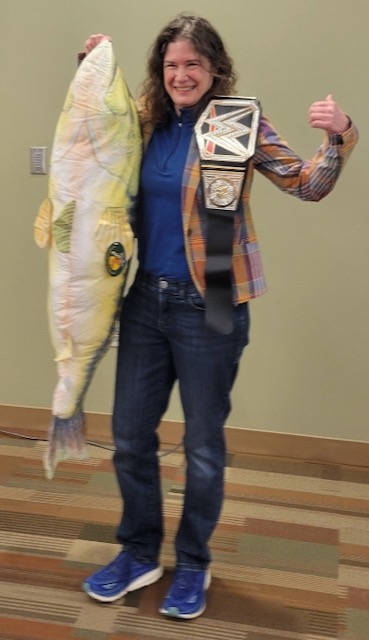
After a half hour or so, the wind picked up and the water got a little choppy. We stumbled upon a flock of birds, and Manny slowed down enough for me to take a few shots of what turned out to be surf scoters. These are two male surf scoters scoter-ing around in the surf.

After a 45-minute ride Manny pointed out a large, brown blob on a hillside…it was a muskox! We approached the shore, but there was no good place to land due to all the rocks lining the shoreline. I shot photos from afar, excited that I had seen and photographed a bucket list mammal.
The big beast didn’t seem to want to come down the hill.

This muskox is a male, based on the thickness of the plate on his head (between his horns). Females don’t have as thick a plate because they don’t butt heads like the males do. No editorial needed.
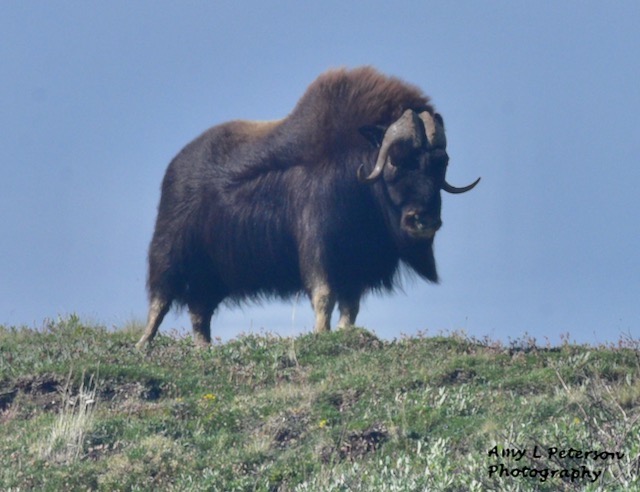
Because we didn’t know if we’d see any more muskox, I took quite a few photos.
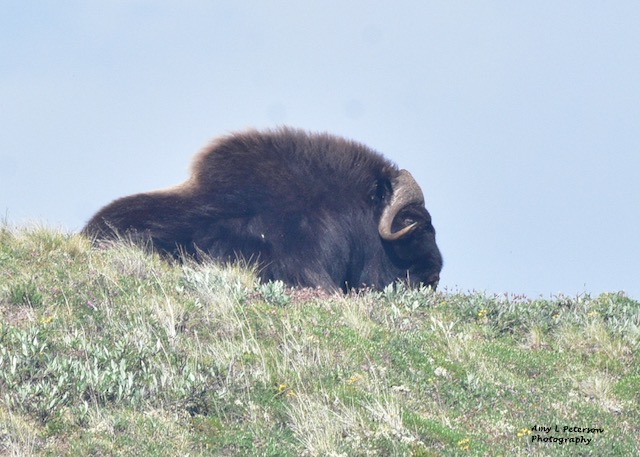

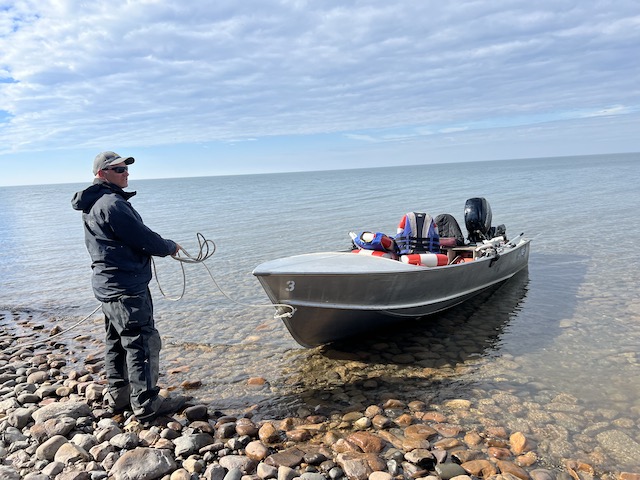
Before we started fishing, we went to shore for a break and saw a plant we’d not seen before.

The wind had calmed down again and for a little while, the lake was calm again. We could see grayling in the clear waters near shore. But we had no light tackle or rods, so continued fishing for lake trout.
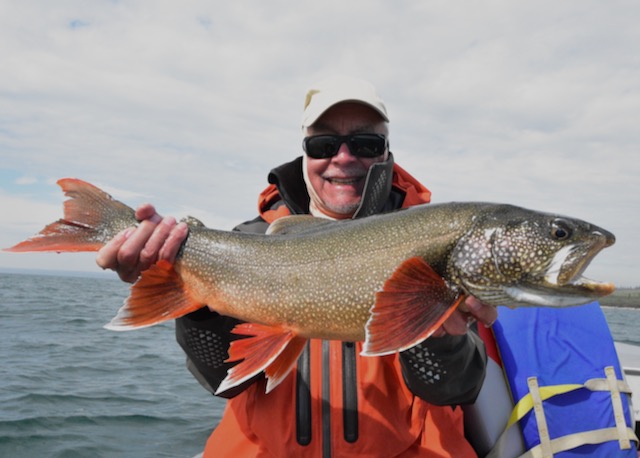
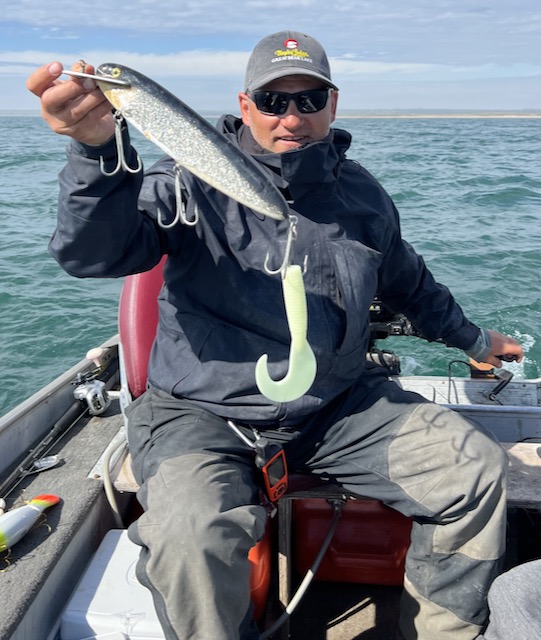
The wind picked up again and a little more bouncing in the waves brought us to a spot where redfin lake trout are known to hang out. We tried a little shallow casting without success. Then we dragged lures for several hours and got several redfins. They’re beautiful! I’d never seen this species of lake trout before, though they are in Lake Superior. We caught a half dozen.

We caught redfins on the five of diamonds (a color/style of spoon). I also tried the lure to the left, which worked for one redfin. Mark also caught the pretty lake trout, below.
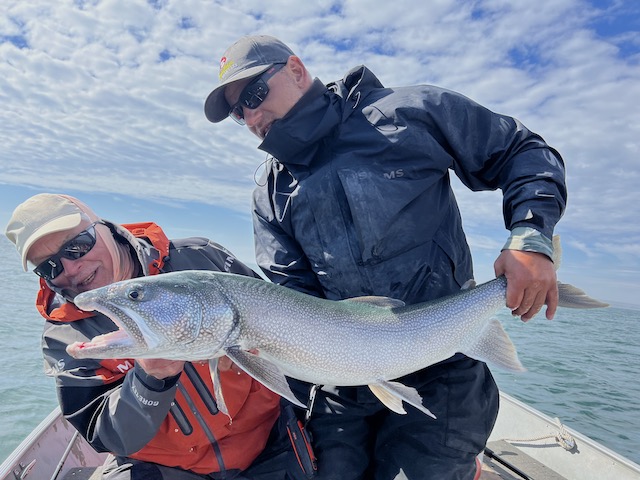
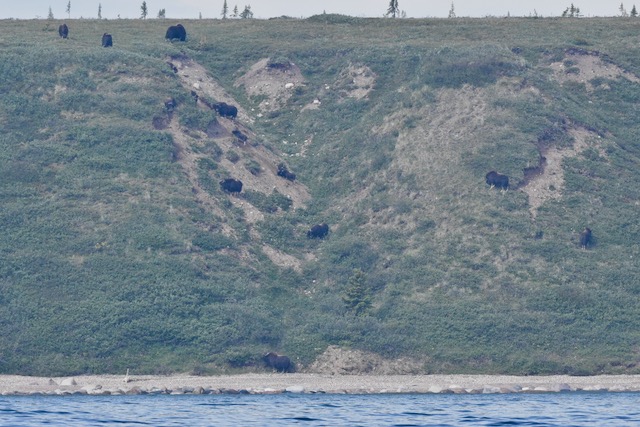
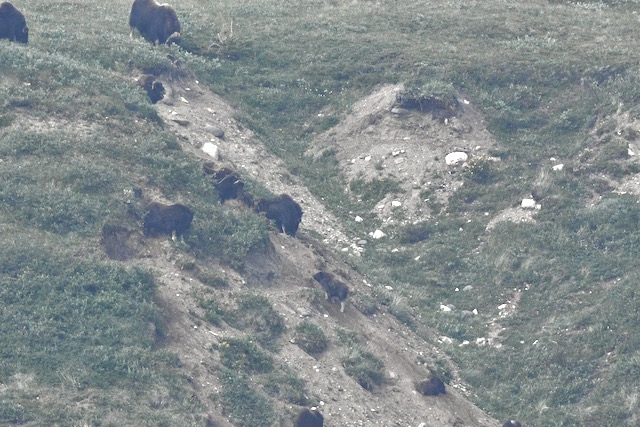
On the way back to the lodge, we passed by the same place where we’d seen the single muskox in the morning. From afar, we could see the side of the bank was dotted with muskox! Manny got us closer and closer to the shore, and I shot lots of photos of muskox. I also shot this video. All photos and vids were taken from the water.
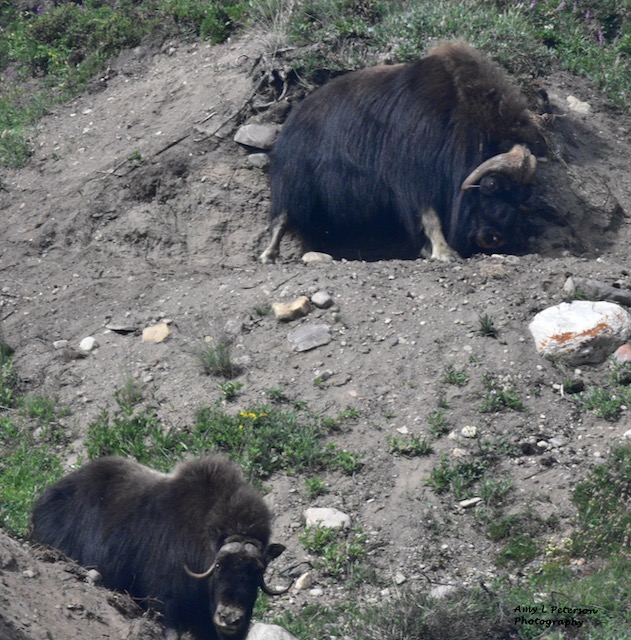
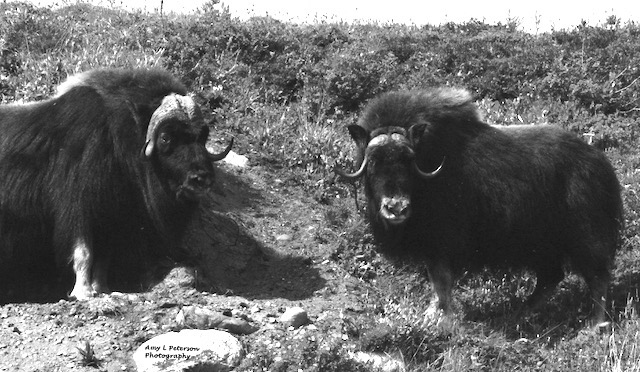
As with other animals, there was a pecking order to the herd, and the big fella on the top right of the photo to the left seemed to be one of the animals at the top of that pecking order. Above is a nice comparison between a male on the left (heavily plated head) and the female on the right (head not as heavily plated).
Below is a big male that was on the hillside eating veggies.
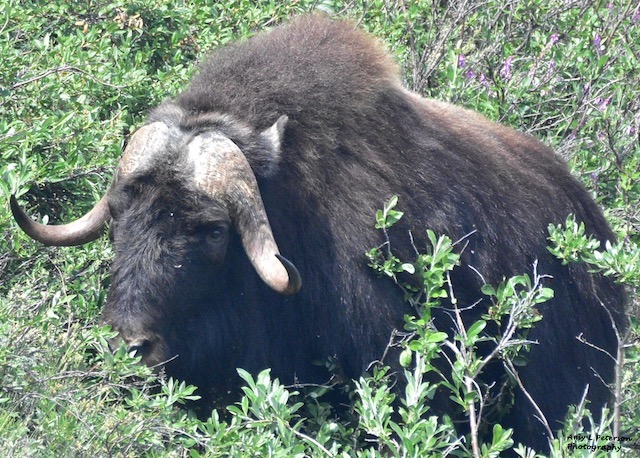

This photo shows a calf on the left and its mom (we suspect) on the right. There were three calves in the herd.
The next one is one of my faves. Check out his hooves!
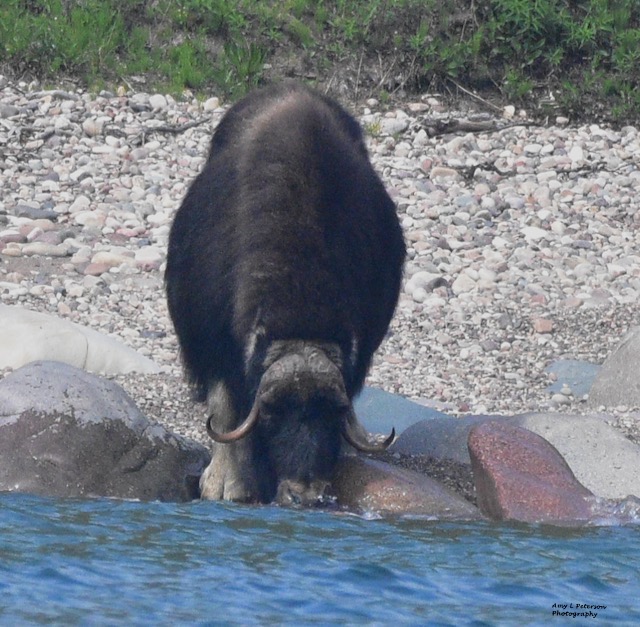
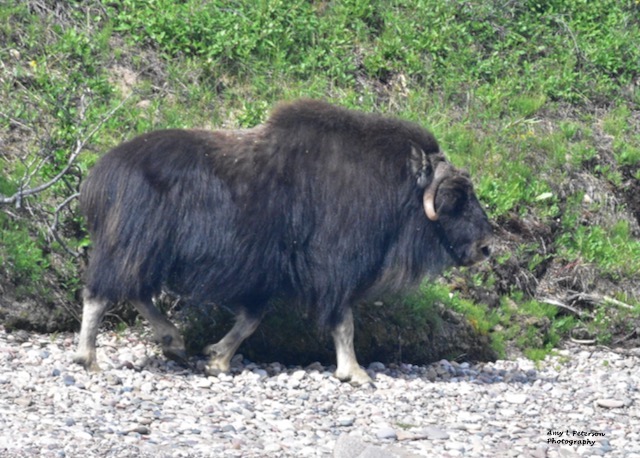
Wait, just a couple more muskox photos….
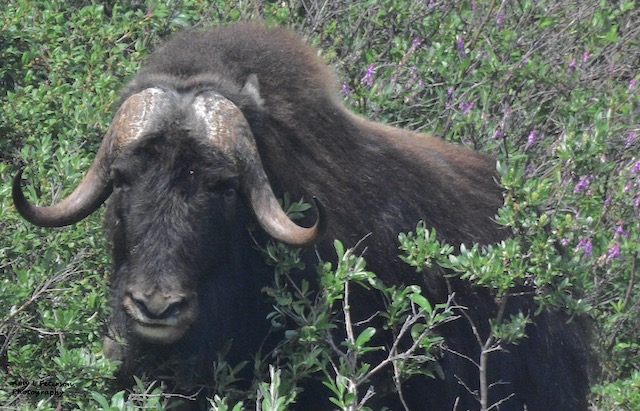

I shot this video of our lunch, because behind us on the shore were the muskox. I had lunch with muskox!
Back to fishing. Now, Mark and I didn’t like to “waste time” waiting for a shore lunch to be made. (A shore lunch consists of Manny whipping up some fresh fish and sides such as corn, beans, fried potatoes). Instead, we ate our lunch in the boat every day so we could keep fishing. Manny brought some kind of lunch meat that always tasted good, fresh lettuce and pickle slices, along with mustard or mayo. And with a side of water from our nifty water bottles, we were good to go.
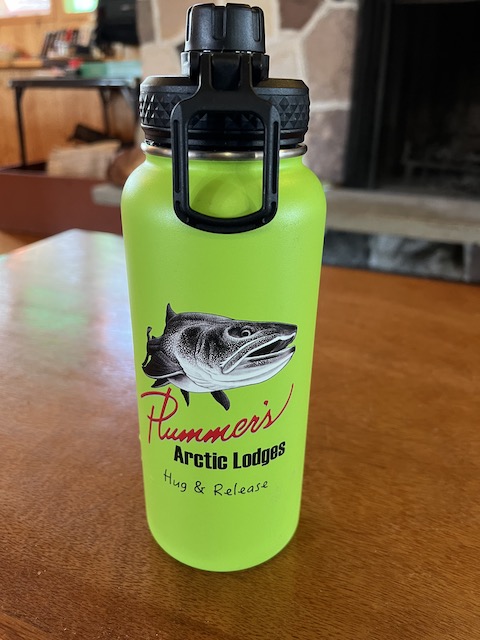
We returned to fishing, but caught nothing memorable. At 3:45-ish, we went to shore to take a pee break. There, I found a savannah sparrow, a cute, little bird that breeds in Canada and the northern US. It winters in Mexico and southern US. They mainly eat seeds, but also insects.


I also heard a bird I’d never heard before–a bird singing a single-note song. I stalked across the tundra and took this photo. Nearby was a female this bird was trying to woo. I felt like I was intruding, so backed away and wished him luck.
I learned later that the bird was a golden plover, a first for me. When not trying to attract a female, this plover runs along the tundra and stops to scan or seize prey.
Nearby, squawking at the top of a tree was this bird, which I think is a lesser yellowlegs. This bird breeds in the meadows and open woodlands of boreal Caanda. According to Wikipedia, lesser yellowlegs are known for defending their eggs and checks. A biologist named William Roman once noted, “They will be perched there as though the safety of the entire universe depended on the amount of noise they make.” A good description based on what I heard.
I’ll admit here that I am not a birder, because a birder would know the difference between a lesser yellowlegs and a greater yellowlegs. To me their both great and I’m not sure one is really lesser than the other.
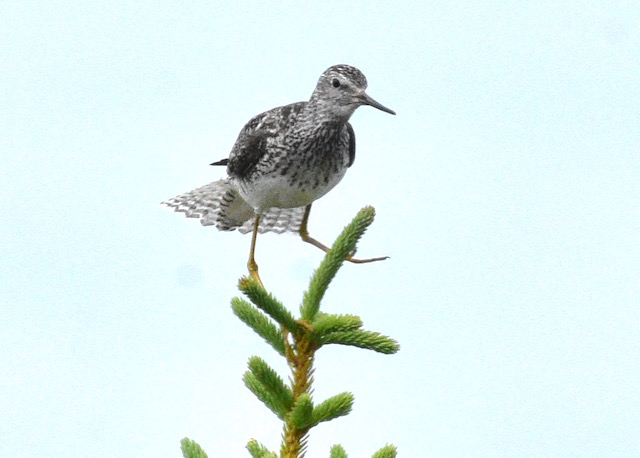

Manny told us he enjoyed the stops on shore, because most anglers who go to Great Bear Lake want a shore lunch and then immediately want to get back to fishing. Manny seldom got to explore the shore. He particularly liked the plants.
We also found some more bear poop.
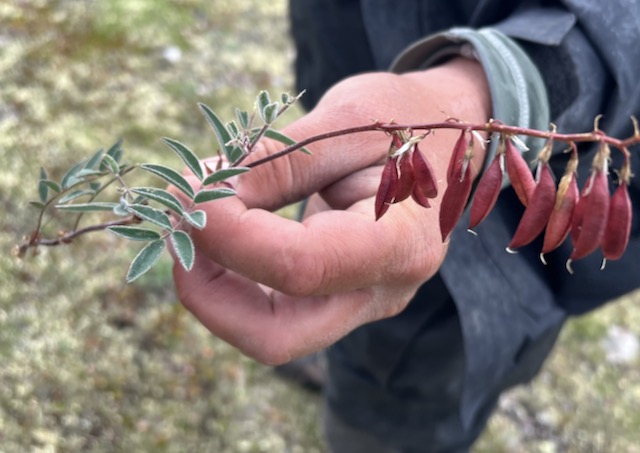
Sometime late afternoon we stopped for a pee break again and found these arctic plants. I don’t know what they are but I can tell you that with the mosses, lichen and delicate plants like this, I almost felt guilty walking around the tundra–all the plants seemed delicate.

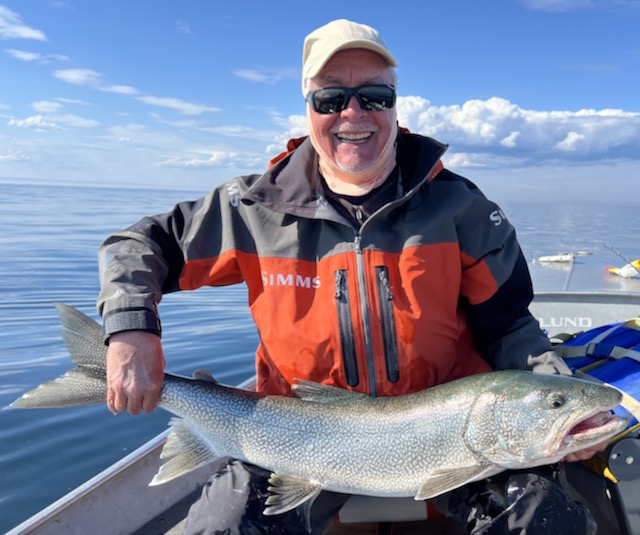
At 5:22 Mark caught this pretty lake trout. I did not catch much, except a female surf scoter in flight.


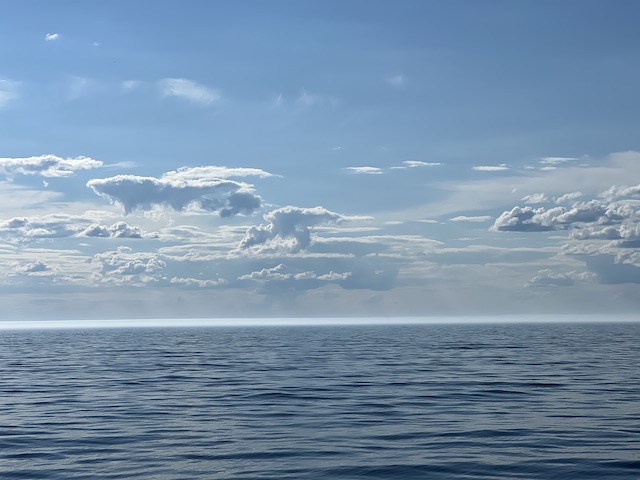

At 7:30 Manny got us back for dinner. Afterwards, I walked the shoreline near the lodge, walking along the sand. The shoreline was beautiful. Inland, near the tip of the peninsula was an adult arctic tern lying on the sand, dead. Around a corner from the dead bird were two arctic terns squabbling–and one fighting–with a third bird. I couldn’t help but wonder if the one by itself was the mate to the dead bird, below.
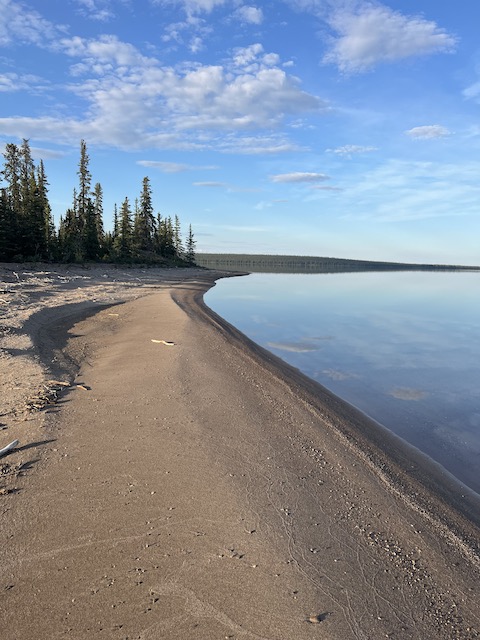

It was hard not to take photos of every semi-palmated plover I saw.


Around the corner were several other arctic terns defending their territory. I tried to stay a respectful distance from them and backed off whenever they landed.
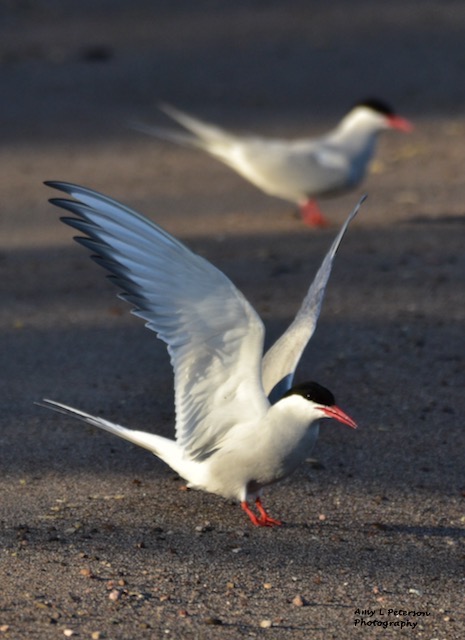
It was 11:36 p.m. when I shot this photo of a varied thrush, my first. This shy bird can be found in the forests of the Pacific Northwest (northern Rockies, Cascade Mountains). They breed in a pretty narrow band of northwest Canada but can be found year-round in coastal areas of NW US and Canada. Unlike arctic terns, these birds don’t migrate far. They eat insects during the summer and berries and seeds in the winter. I was stoked to see this, my first varied thrush.
It was near midnight. And past time to go to bed.
